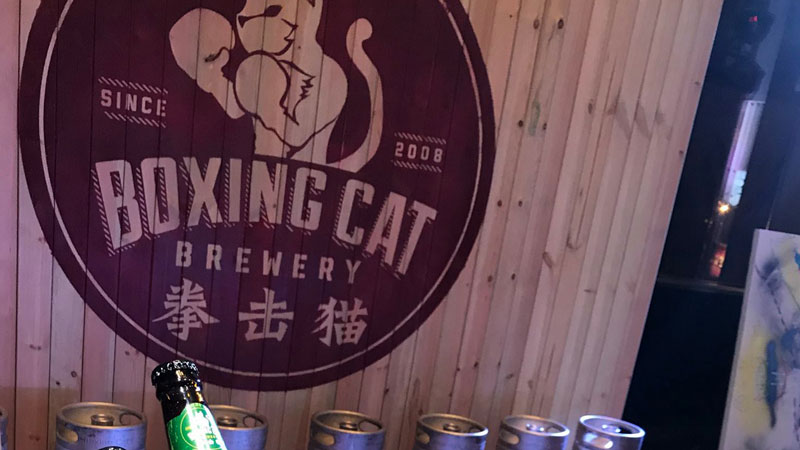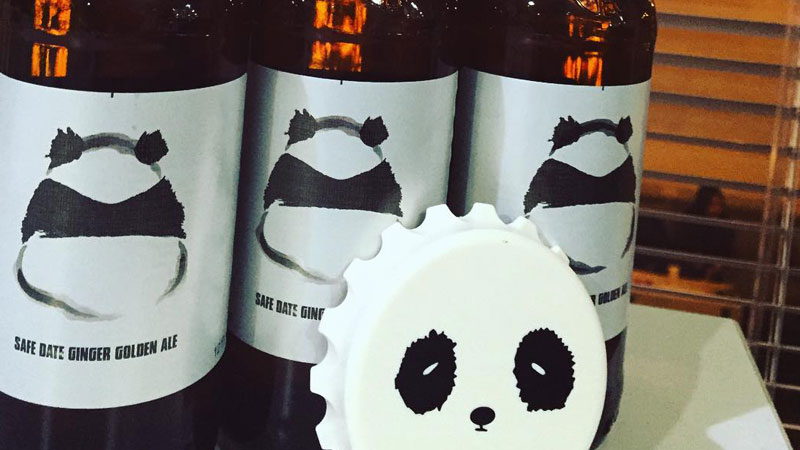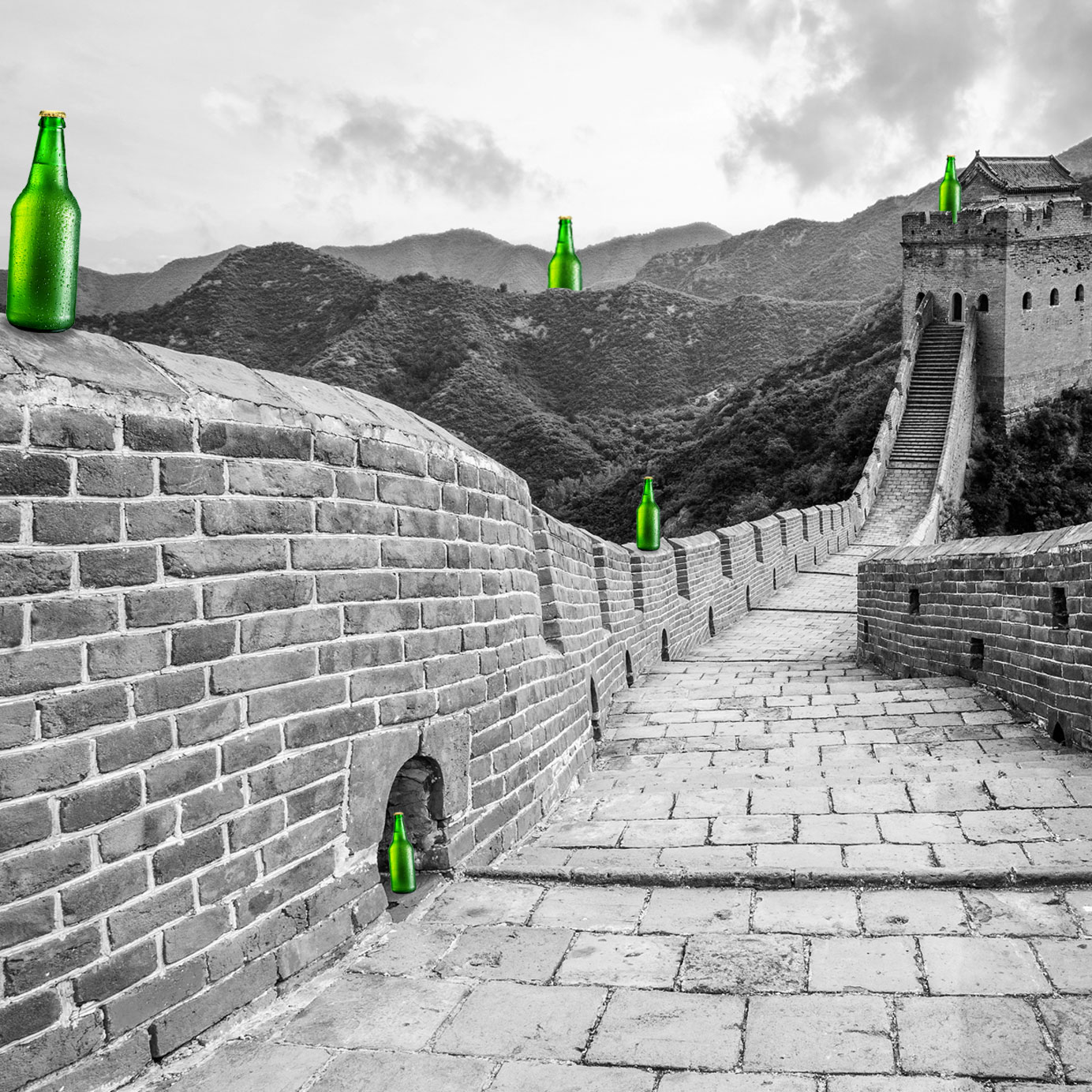When AB InBev, the world’s largest beer company, acquired Shanghai-based pioneer Boxing Cat Brewery, it sounded an alarm for China — and the world.
Ever since, every single member of China’s craft beer community has been debating how to respond. Some secretly hope that a conglomerate will come knocking on their doors with a large check. Others urge their peers to work together, make a better product, and resist the creeping influence of Big Beer. Some advocate for an organization akin to the Brewers Association, uniting small operations and establishing business practices.
Corporatization is a hot topic in any craft community, but China’s beer market is unlike its equivalents in North America and Western Europe. For one, small-scale and locally owned brewing operations are very young, with many craft labels less than a decade old. Industry practices are currently unregulated in China, too.
“Big beer’s influence has the potential to be more corrosive to the China market,” Chandler Jurinka, co-founder and president of Beijing’s Slow Boat Brewery, says. “Freebies, pay for play, buying draft lines – all of which are illegal elsewhere – remain unregulated in China.”
China could become the next hotbed of craft beer innovation. Or it could be the next casualty of expansionists who prioritize cash over craft. Chinese craft beer is at a crossroads.
*
Ten years ago, in most Chinese cities, beer was not something you “supported,” talked about, or identified with. You just drank it.
In the early aughts, if you wanted to order a beer in a bar in Beijing or Shanghai, your choices were limited to light brews from Chinese companies like Tsingtao and Snow, or slightly stronger international lagers like Carlsberg or Heineken. A very select few places might stock Belgian Trappist ales or German wheat beers, a novelty for which you paid through the nose.
“If there was good craft beer in Beijing in 2009, I might never have opened,” says brewmaster Carl Setzer, who founded Beijing’s Great Leap Brewing with his wife Liu Fang in late 2010.
In smaller cities, you’d be happy with a choice of two beers. Any two beers.

The first shoots of a genuine craft scene emerged in early 2008. That spring, in the suburbs of Shanghai, Lee Tseng and Kelley Lee opened Boxing Cat Brewery, with co-founder Gary Heyne as brewmaster. Texas-born Heyne, who passed away suddenly in May 2010, originally moved to China to brew at a short-lived Shanghai bar called Henry’s, which Tseng says was Shanghai’s – and probably China’s – first American-style craft beer bar.
Boxing Cat proved successful. As Tseng, Lee, and Heyne established their brand in Shanghai, a smattering of other craft breweries began opening across China.
Gao Yan established a brand called Oktoberfest in Nanjing in 2008, later relaunched as Master Gao. In a Tibetan region of Yunnan province, Swiss-born brewer Songtsen “Sonny” Gyalzur started Shangri-La Beer in 2009.
“I thought I was the only guy in the whole of China who was doing something like that,” Gyalzur says, until a Chinese traveler told him about Boxing Cat.
Setzer and Liu opened Great Leap Brewing in a modest Beijing hutong in late 2010. “We were just going to do our own private bar for friends – we didn’t really have our sights set on opening to the public,” Setzer says.
However, by the following summer, Great Leap was a phenomenal success. Meanwhile, Jurinka and Dan Hebert were launching Slow Boat Brewery in a production facility just outside of Beijing. Gradually, the Chinese capital asserted itself as the center of Chinese craft brewing, with brands like Jing-A, Panda Brew, and NBeer competing for the attention of an increasingly craft-hungry clientele.
In those early days, most of the people drinking craft beer were expats. Now, Chinese customers dominate the market, thanks to rising incomes and an emerging generation of confident, curious, and worldly young people.
Likewise, most of the original crop of brewers were not Chinese. Gao Yan of Master Gao was a notable exception, and his example inspired other Chinese brewers like Pan Dinghao of Panda Brew and Yin Hai and Xiao Bianr of NBeer. Many more have followed, with associations such as Beijing Homebrewing Society springing up in cities large and small.
Jurinka estimates that there are over 1,000 craft breweries in China today, and the market is only just beginning to establish itself.
“The segment has expanded beyond just first- and second-tier cities,” Anna Ward, an alcoholic drinks analyst at Euromonitor International, says. “While imported brands remain significant to the craft segment in China, increasing numbers of microbreweries are opening across the country.”
This growth is exciting, but those on the ground reiterate the importance of perspective. According to Jurinka, there are still millions of Chinese people who have never even heard of craft beer.
Some analysts estimate that craft makes up 0.2 to 1 percent of China’s beer market. Great Leap Brewing’s Carl Setzer bristles at the notion.
“Any numbers you see can’t be trusted,” Setzer says. “Craft is such an insignificant percentage of Chinese beer consumption. It’s the rounding error of waste per year at one commercial brewery.”
The overall craft market in China may still be tiny, but major brands within the sector are eyeing expansion. Great Leap is building a large-scale brewery, with plans to distribute domestically and internationally. Panda Brew and Master Gao are extending their reach across the nation, including availability at some retail outlets.
Chinese brewers have also embraced festivals and collaborations as they grow. Beijing’s Jing-A hosted eight breweries from Nordic countries in October for the second installment of its 8×8 Brewing Project. Last spring, Great Leap’s Setzer spoke about Chinese craft at the 2018 Craft Brewers Conference in Nashville.
As the craft beer scene matures, quality and authenticity are increasingly important battlegrounds for Chinese brewers. An increasing number of breweries have staked out a distinctly Chinese identity by using local ingredients like Sichuan peppercorns, koji rice, and a variety of teas.
Contract brewing, meanwhile, is divisive. On the one hand, it’s a popular shortcut many brewers take to scale up production, because acquiring a license to build a brewery in China is extremely complicated.
But Gyalzur argues the consequences could be poisonous for Chinese craft’s long-term prospects. Brewers who choose contract brewing are outsourcing their production to facilities with “old machines, old equipment, no management know-how, and no quality know-how,” he says. “What comes out is a low-quality product. The customer will have a bad experience, and they may turn away from craft beer.”
These circumstances complicate China’s craft brewing industry and may have helped motivate Boxing Cat Brewery’s explosive decision to sell to ZX Ventures, the venture capital and innovation arm of AB InBev, in March 2017.

Lee Tseng, Boxing Cat’s CEO and co-founder, says the decision to sell was rooted in pragmatism. The company wanted to grow and felt a simple injection of cash from a one-time investor would not be enough.
“We took a really honest look at our options,” Tseng says. “We felt ZX had portfolios and experience internationally with craft beer brands that were much more developed than what we were. They have established a production and distribution facility and system in China that in our opinion was number one. That was ultimately what drew us to choose them.”
Boxing Cat has since moved most of its production to ZX Ventures’ brewing facility in Wuhan, in China’s Hubei province. The Wuhan brewery also produces supplies of fellow AB InBev-owned Goose Island for the Chinese market. Boxing Cat recently opened its first permanent bar in Beijing, less than a mile from one of Great Leap’s two brewpubs.
*
Setzer and Gyalzur believe that, for independent craft brewing to thrive in China, Chinese craft brewers need to establish a forum comparable to the U.S. Brewers Association. Trade associations like the Alcohol Association of China, whose beer subdivision started allowing craft breweries to become members last year, offer some hope.
Setzer believes the Alcohol Association’s interests align with those of independent brewers. “What the Association doesn’t want is AB InBev to volunteer to write the definition for craft beer for China without any other people at the table,” he says. “If AB InBev does that, it will create a barrier to entry for a lot of small independent entrepreneurs that want to get into the field of craft beer.”
Will there be more acquisitions? Setzer, a fierce critic of AB InBev, suspects his peers would sell their breweries in an instant. However, he believes that international conglomerates will hold off on further Chinese craft purchases until they see proof that craft investments yield satisfying returns.
Even in the absence of a buying spree, China’s craft brewers must steel themselves for the future. Setzer and Great Leap Brewing are aiming to set a new benchmark for craft brewers in China, with the construction of an enormous new brewery in Tianjin, a shipping hub around 70 miles from Beijing. It’s set to open in 2019.
“I just want to be the best,” Setzer says. “There’s a high possibility that the best beer in the world is going to come out of China. That’s the goal.”
